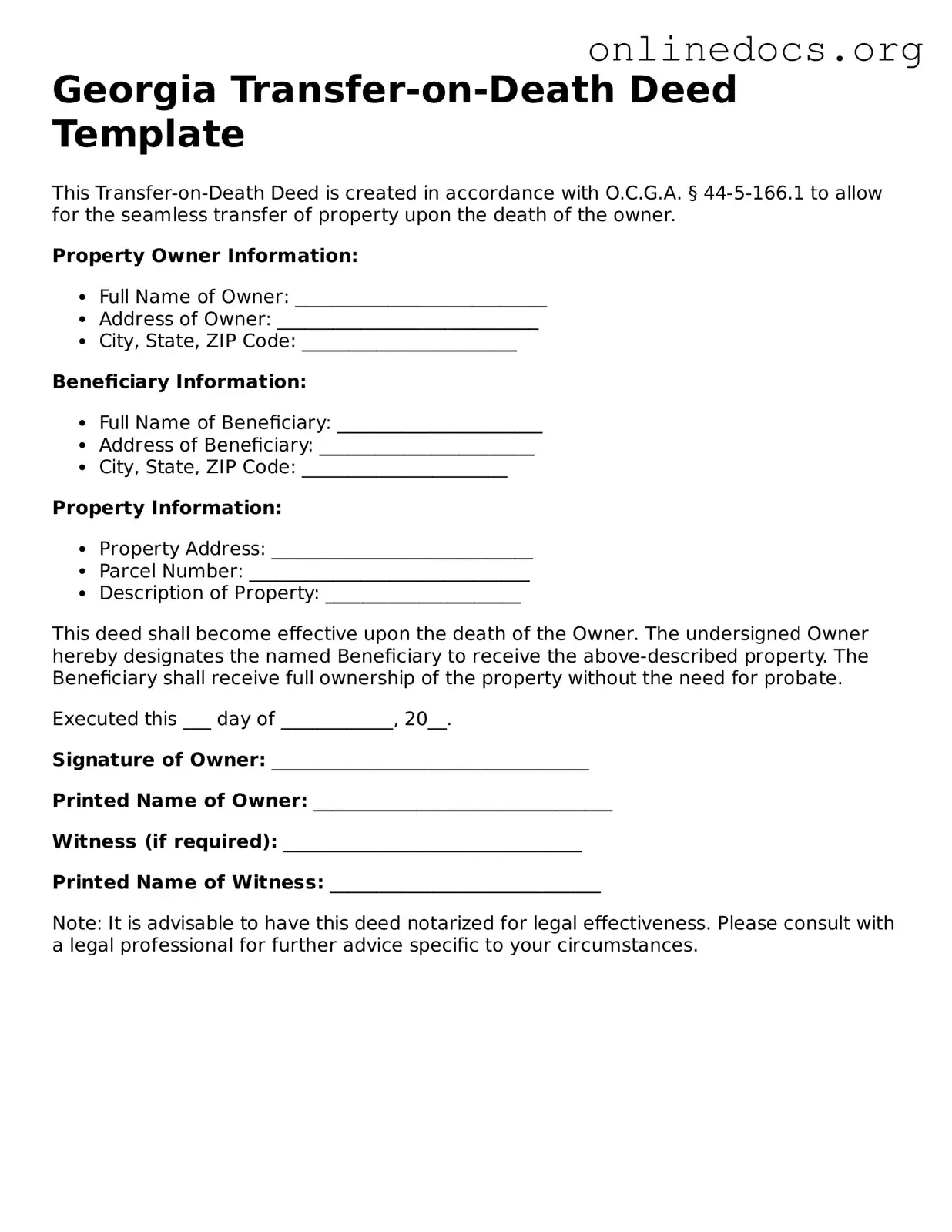The Georgia Transfer-on-Death Deed (TOD) form shares similarities with the Revocable Living Trust. Both documents allow individuals to manage their assets during their lifetime while providing a mechanism for transferring those assets upon death. A revocable living trust enables the grantor to maintain control over the assets and make changes as needed, similar to how the TOD deed allows property owners to designate beneficiaries for their property without going through probate after death.
Another document comparable to the TOD deed is the Last Will and Testament. Like the TOD deed, a will outlines how an individual's assets should be distributed upon their death. However, the key difference lies in the probate process. A will must go through probate, while a TOD deed allows for direct transfer of property to beneficiaries, bypassing probate altogether.
The Beneficiary Designation form is also similar to the TOD deed. This document allows individuals to name beneficiaries for certain accounts, such as life insurance policies or retirement accounts. Both the Beneficiary Designation and the TOD deed facilitate the transfer of assets outside of probate, ensuring a smoother transition of ownership upon death.
The Joint Tenancy with Right of Survivorship is another document that aligns with the TOD deed. In joint tenancy, when one owner passes away, their share of the property automatically transfers to the surviving owner. This concept mirrors the TOD deed's function of transferring property directly to a designated beneficiary without the need for probate.
The Life Estate Deed is also relevant when discussing property transfer documents. A life estate deed allows an individual to retain the right to use and occupy a property during their lifetime, while designating a remainder beneficiary who will receive the property after their death. This arrangement is similar to the TOD deed, as both allow for a seamless transition of property ownership upon death.
The Transfer-on-Death Registration for Securities is another document akin to the TOD deed. This registration allows individuals to designate beneficiaries for their securities, ensuring that these assets transfer directly to the named individuals upon the owner's death. Like the TOD deed, this registration helps avoid the probate process, streamlining the transfer of ownership.
In navigating the complexities of child care, it is essential for parents or guardians to consider all available legal options, including the https://californiapdfforms.com/power-of-attorney-for-a-child-form/ which grants temporary authority to another adult, ensuring that a minor child's needs are adequately met during periods of absence or incapacity.
The Payable-on-Death (POD) Account is comparable as well. This type of bank account allows account holders to name beneficiaries who will receive the funds upon their death. Similar to the TOD deed, a POD account provides a straightforward way to transfer assets without the complications of probate.
The Community Property with Right of Survivorship is also similar to the TOD deed. In this arrangement, married couples can hold property together, ensuring that upon the death of one spouse, the surviving spouse automatically receives full ownership of the property. This automatic transfer of ownership is a key feature shared with the TOD deed.
Lastly, the Durable Power of Attorney for Finances is relevant in this context. While not directly a property transfer document, it allows an individual to designate someone to manage their financial affairs, including property decisions, if they become incapacitated. This document complements the TOD deed by ensuring that the designated beneficiary can manage the property effectively until the transfer occurs.
